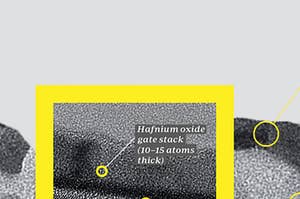BuzzFeed Community is a hub for BuzzFeeders to create awesome quizzes and posts that people love. Make your own, or browse what other people are making.
Make your own post!
How Teeny, Tiny Transistors Are Born in a Near-Total Vacuum
Nanotransistors just got a lot more nano. A new chip construction process cooked up by Applied Materials in Santa Clara creates transistors so small they can be measured in smatterings of atoms. The company can now coax a few dozen of the little guys to assemble themselves into a base layer that helps control the flow of electricity on computer chips. The biggest development is the manufacturing process: Applied Materials devised a way to keep several interconnected manufacturing machines in a near-total vacuum—at this level, a single stray nanoparticle can ruin everything. The other part of the breakthrough is making this base from hafnium (used also in nuclear control rods) instead of the standard silicon oxynitride, which is terrible at holding back electrons on a supersmall scale. (Gordon Moore himself has called this technique the biggest advancement in the field in 40 years—and it is likely to keep processors advancing on pace with his eponymous law for the foreseeable future.) Applied Materials' system means transistors can be about 22 nanometers wide, as opposed to the current standard of about 45 nanometers, resulting in smaller, cheaper computing devices. Here we explain how the shrinking happens.

